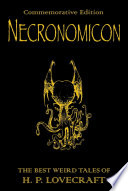When GhostStory first came out, it grabbed a fair bit of interest. Unfortunately, despite the number of downloads, I got the impression actual usage was low. There were quite a few stars on the project, a couple of forks and no issues. That's not a good sign. If your project has no issues, it doesn't mean your codes are perfect, it means nobody's using them.
After asking on Twitter and generally 'around', it emerged that, although people liked the idea,
- initial setup was too tricky
- test maintenance was a hassle
- it’s not WebKit that needs tested most
Number 3 might seem odd but it has become a fact that, due to the excellent tooling, most web developers use a WebKit variant (chrome, chromium, safari, etc) as their main browser when building. This means they do generally see the problems there where they might miss the ones in IE. This isn't to say WebKit shouldn't also be tested, but GhostStory was built on PhantomJS - a WebKit variant - and therefore only picked up problems that occurred there.
I've been working evenings and weekends for the last couple of several months to improve the CSS testing setup on here.com and I think we've gotten somewhere. For a start, the name has changed...
Hardy
A.K.A. GhostStory 2 - The Ghostening
This is the bulk of the original GhostStory project but instead of running through PhantomJS, it now uses Selenium via the Webdriver protocol. This means you can run your same CSS tests - still written in Cucumber - against any Webdriver-capable browser. This means Chrome and Firefox and Opera and PhantomJS and Internet Explorer and Mobile Safari on iOS and the Android Browser and and and…. you get the idea.
Installation
It’s a simple npm-based install:
npm install -g hardy
You can then call it by passing a folder of .feature files and step definitions.
hardy testfolder/
Any relevant files it finds will be automatically parsed.
Okay, that's most of the difficulty out of the way. A simple install, simple test run and, hopefully, a simple integration into your build system. The only thing left to solve is how to make it easier to make the Cucumber files in the first place.
Hardy Chrome Extension
It’s now as simple to make your initial test cases as opening Chrome DevTools and clicking around a bit. Well, almost. Still under development, the Chrome extension helps you make feature files by navigating around the site you want to test and capturing the styles you want to test for. A Hardy-compatible Cucumber file and the accompanying element selector map is generated ready to be dropped into your features folder.
What's missing?
Is there anything missing from this flow that you'd like added? A Grunt task to set it up? Prefer something else over Cucumber? Want a Maven Plugin instead of a grunt one? Just let me know. I'm not promising I'll do it, just that I'd like to know.
Let me know by filing an issue on GitHub.
Credits and notes
The image diff code is heavily borrowed from PhantomCSS. In fact, if PhantomCSS could be run through Selenium, I'd switch over to it straight away.
Project structure and the automatic way Cucumber files, steps and suchlike all play nicely together mostly comes from WebDriverJS and CucumberJS.
Note: It’s just Hardy, not Hardy.JS. The idea here is just to show how to setup basic CSS tests and provide one (JS) solution to the problem. It’d be nice if Hardy could include common JBehave steps for CSS testing, too. And whatever it is Ruby people use.


